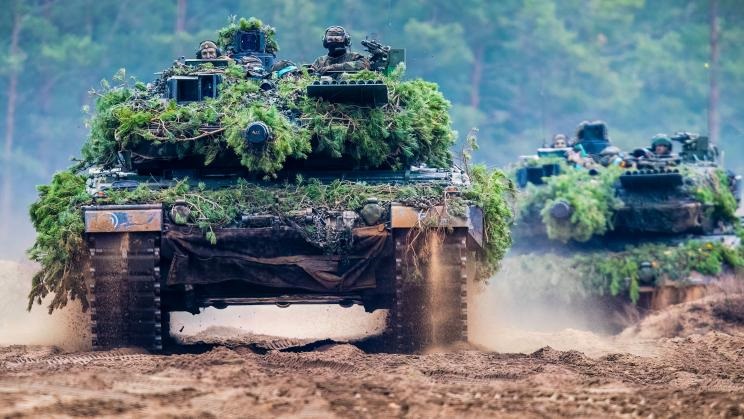The Stockholm International Peace Research Institute (SIPRI) has released data showing that NATO members US and France were responsible for more than half of all heavy weapons supplied worldwide in the period between 2018 and 2022. The data was released by SIPRI on Monday, March 13.
As per the data, major European countries, mostly NATO members, increased their arms imports by 47%, in a period when the rest of the world, particularly the countries of the Global South, witnessed a significant decline (5.1%).
East Asia and Oceania were the only other regions, apart from Europe, that registered an overall increase in arms imports by 21% and 25%, respectively, in the 2018-22 period. Within these regions, Japan registered the sharpest increase in arms imports (171%), followed by South Korea (61%), and Australia (23%). All three countries are major US allies.
China, the largest country in the East Asian region and the world’s second largest economy as well, witnessed an increase in arms imports in the said period, however, of just 4%.
Most countries in Africa (-40%), Latin America (-21%), and the Middle East (-8.8%) registered a significant decline in arms imports in the 2018-22 period, in comparison to 2013-17.
Counted together, Asia and Oceania remained the largest importer of heavy weapons in the world, with a share of over 41%. However, because some sub-regions (such as South-East Asia) registered a sharp decline (-42%), the overall region also registered a slight decline in arms import by 7.5% over the same period.
The latest SIPRI data shows that West Asia, which still has some of the largest importers of weapons in the world, such as Saudi Arabia and Qatar, registering a significant decline in weapons imports by close to 9% in 2018-22 period.
Among the major arms importers, India retains its position of being the largest buyer of heavy arms (11% of all global imports) in the world in the period 2018-22. Saudi Arabia (9.6%) was the second and Qatar (6.4%) was the third-largest.
NATO countries dominate the weapons export market
According to the SIPRI data, major NATO countries, the US (40%), France (11%), Germany (4.2%), Italy (3.8%), the UK (3.2%) and Spain (2.6%) amounted to nearly two-third of all arms exports in the world in the 2018-22 period.
Russia, which still retains the second position in global arms exports, has seen a massive decline in its share in global exports recently, with its share falling from 22% to just 16%.
The decline in Russian arms exports is mostly due to the sanctions imposed by the US and its European allies following the Russian annexation of Crimea in 2014. Fresh rounds of sanctions, intimidation by the US and NATO, and the beginning of the war in Ukraine last year may further decrease the Russian share in global arms export, a SIPRI press release notes.
The US share in global arms exports increased from 33% to 40% in the same period, and its ally France, the third-largest exporter of weapons, was also a significant beneficiary, with its share increasing from roughly 7.1% to 11%.
Most fresh weapons supplies are done to regions where there is an active conflict, such as the Middle East (Yemen war), or regions where the US and the west have been involved in diplomatic or economic conflicts. This includes East Asia, where there has been an increasing emphasis on the so-called “threat from China.”
SIPRI data shows that there is a growing race to arm countries in East Asia and Oceania by the US and its allies. In most cases, they are the only suppliers of weapons to Japan, South Korea, and Australia.
SIPRI also notes that 80% of all arms sold to the Middle East region come from the US (54%) and other NATO countries such as France (12%) and Italy (8.4%).





